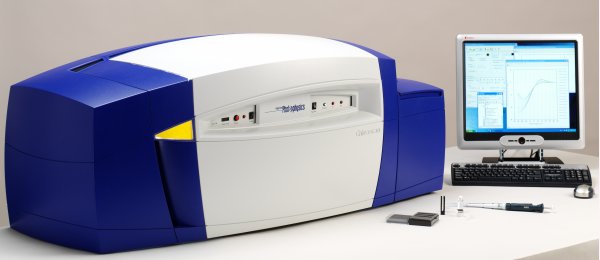Chirascan V100

Location - Britannia 107
For enquiries, please contact - Dr. Karin Smorodinsky-Atias
The information provided in this section is taken from “Chirascan V100 User Manual” by Applied Photophysics and "How to study proteins by circular dichroism". Kelly, S.M., T.J. Jess, and N.C. Price, Biochim Biophys Acta, 2005. 1751(2): p. 119-39.
Circular dichroism (CD)
This method is used to determine the structural and thermodynamic properties of molecules, by measuring the difference in absorbance between left-handed circularly polarized (L-CP) light and right-handed circularly polarized (R-CP) light, over a range of wavelengths.
The Chirascan instrument provides a highly sensitive and accurate system, thereby generating reproducible quality data.
Used to determine
-
Protein’s secondary and tertiary structure composition
-
Protein stability
-
Protein folding and conformation change
-
Protein melting point
-
Complex formation
-
Nucleic acid secondary structure
Requirements
-
A chiral molecule with one or more chromophores
-
Quartz cuvettes with a suitable pathlength (0.2 mm - 10 mm)
Advantages
-
No limitation of molecule size
-
Label free
-
Fast
-
Doesn’t require very concentrated samples
Type of samples
-
Proteins
-
Nucleic acids

